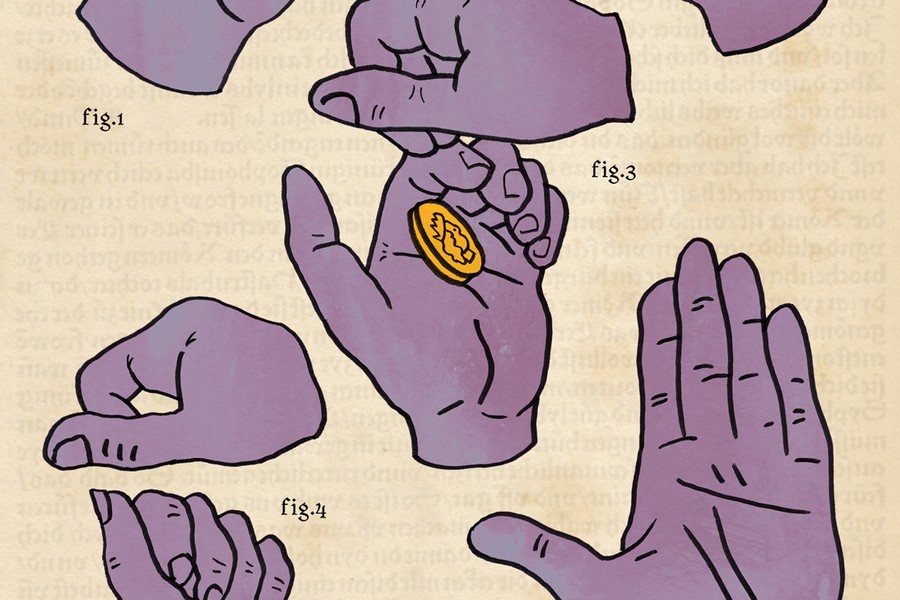Thrown into wishing wells for luck and also a commodity tracked and recorded. Struck in many metals but of only one currency. A visual documentation of a monarch and simultaneously of many faces and values. Yet, the idiom to 'take something at face value', derived from these items, coins, is exactly what should not be done when understanding them. Not just in terms of intrinsic value (gold does not just mean gold) and nominal value, when of collectable interest, but also in terms of design.
For the first time in seven decades the face of a new monarch adorns our coins. In many ways, the five subtly changing portraits which sympathetically charted the reign of Elizabeth II were such constants that her image became more an iconic signifier for currency rather than appreciated as artworks, crafted in the same manner as those on canvas or film by artists such as Lucien Freud and Annie Leibowitz. Yet, there have been times throughout our numismatic past when artistry and function have notably been struck as one.

At auction, examples frequently achieve results from £1,000 to upwards of £10,000 for exceptional pieces – many times their original face value.
To mark the coronation, Charles III has been depicted wearing the Tudor Crown, an emblem also seen on the coinage of his predecessor Henry VIII. However, it was the later coinage of Henry VIII which portrayed him as he is best remembered. His third coinage, produced between 1544 - 1547, broke with previous depictions of Tudor kings, to show him not in profile but forward facing to his subjects in a far more realistic manner than had been seen before. It marked a development in the sophistication and realism of coin portraiture as well as the monarchy's obsession with image. Due to the debasement of the currency, these coins also colloquially earned the king the nickname ‘old copper nose’ because of the colour they developed when worn from circulation. The portrait of the king, now in the final years of his life and in poor health, offered an image of a monarch who was astutely aware of the importance of iconography and its ability to not only convey but create dynastic strength.
The portrait, which was struck on the silver denominations of currency (Testoons, Groats and down to Halfpennies) referenced the great works produced by the court painter Hans Holbein the Younger. Most notably his masterpiece in propagandistic expression, the Whitehall Mural was completed in 1537. The painting was disseminated amongst officials and high powered individuals through numerous smaller works produced on panel. It is therefore not surprising that this was a strategy also adopted on the king's currency as a means to further cement this perception in the minds and pockets of his subjects. Although the portrait of Hans Holbein was destroyed by fire in 1698, it is in the coins which survive today that this image of majesty is still tangible. At auction, examples frequently achieve results from £1,000 to upwards of £10,000 for exceptional pieces – many times their original face value, although still a fraction of the figure which would ever be paid for Holbein's painted works.
By the nineteenth century the production of coins had far surpassed the hand produced means of earlier decades. However, it was a time when royal imagery was to enter a period of unparalleled interest and circulation. The accession of Queen Victoria created a new problem at the time: how was a woman of only eighteen to reconcile the roles required as the head of state? The answer to this was found in allegory, specifically from Edmund Spencer’s Faerie Queen, a fable most associated with Britain’s celebrated female monarch, Elizabeth I. The characters Una and the Lion, were seized upon by William Wyon, master of the Mint and the first medallist to be acknowledged by the Royal Academy, for the production of a Pattern Five Pound piece struck for 1839. It was the first time a British monarch was represented on a coin as anything other than themselves. Una, a young princess previously imprisoned, is joined by a lion on her quest for freedom. The lion, captivated by her virtue and beauty, becomes her companion and protector. Wyon’s depiction of Victoria as Una, an innocent yet powerful controller of the British lion, played perfectly into the zeitgeist of Britain and its self-perception as a global power and internal haven for morality.
The accession of Queen Victoria created a new problem at the time: how was a woman of only eighteen to reconcile the roles required as the head of state?
Still today this medallic artwork is understood to be perhaps the most beautiful design ever to be struck. The pieces were never intended for circulation, with only a few hundred ever made. Beauty and scarcity have therefore combined to create record-breaking auction results, with the most recent example sold by Spink hammering for £230,000. Yet the portrait busts of Victoria by Wyon, struck on her currency until her Golden Jubilee in 1887, are also of profound merit – a merit which is perhaps becoming more recognised, with earlier dated Sovereigns and Half-Sovereigns previously appreciated purely as investment items now realising prices above their intrinsic value.
It may be a cliché to say that only time will tell whether or not the coins of the House of Windsor will be the collectors’ items of the next generation. What is for certain is that coins struck with beauty and artistic merit in mind will always be appreciated, and will always appreciate.
Georgie Potter, Specialist Numismatics and Tim Hirsch, Director of Global Auctions
www.spink.com
Illustration by Adam Mallett



